Lecture 72: Endocrine & Nutritional Disease / Alopecia & Hair Cycle Disorders
1/39
There's no tags or description
Looks like no tags are added yet.
Name | Mastery | Learn | Test | Matching | Spaced |
|---|
No study sessions yet.
40 Terms
What are the similarities and difference between alopecia and hypotrichosis?
alopecia is the complete absence of hair and hypotrichosis is partial absence of hair, but both arise from loss of hair shafts or failure to produce hair due to inflammation, trauma, ischemia, endocrinopathy, or genetic factors
What is traumatic alopecia?
alopecia from self-trauma (scratching, biting), excessive grooming, or friction → frictional alopecia occurs on areas subjected to chronic rubbing
What is inflammatory alopecia?
alopecia due to folliculitis (infectious or autoimmune), leading to follicle destruction and hair release
What is endocrine alopecia?
hormonal imbalances impair follicle cycling → follicles arrest in telogen or kenogen phases → results in follicular atrophy and non-inflammatory, systemic hair loss
What is ischemic (nutritional/traumatic) alopecia?
alopecia seen in cats post-trauma (ex. pelvic fracture alopecia) due to localized ischemia and atrophic skin
What is follicular dysplasia?
abnormal development of hair follicles causing patchy alopecia, abnormal or absent hair shafts, often symmetrical
What are examples of follicular dysplasia and genetic alopecias?
congenital alopecia/hypotrichosis: complete or partial absence of follicles
color dilution alopecia: linked to coat color genes
hairless breeds
What is prolonged postclipping alopecia?
delayed regrowth in plush-coated breeds (e.g., Chow Chow) due to hair cycle arrest or clipping during telogen phase
What is traction alopecia?
chronic ischemia from tight bands or barrettes in longhaired dogs → localized, permanent hair loss
What is recurrent flank alopecia?
cyclic, well-demarcated bilateral flank hair loss, often in Boxers and Bulldogs; photoperiod and genetics implicated
How does hyperadrenocorticism (cushings) cause skin lesions?
glucocorticoids suppress hair growth (anagen inhibition) and cause catagen induction → bilateral symmetric alopecia sparing head/limbs, thin fragile skin, comedones, calcinosis cutis, poor wound healing, and seonceary infections
What are the firm ulcerated dermal plaques formed in dogs with Cushing’s?
calcinosis cutis from dystrophic calcification
How does feline hyperadrenocorticism affect the skin?
extreme skin fragility due to atrophic dermal collagen and decreased anagen follicles
What skin lesions are seen in adrenal-associated endocrinopathy in ferrets?
elevated sex steroids, rather than cortisol, causes symmetric alopecia possibly with pruritus
What skin lesions does hypersomatotropism (acromegaly) cause?
thick, folded skin (glycosaminoglycan accumlation), long dense hair coat, and hard claws due to excessive growth hormone due to progesterone-induced mammary GH secretion
How does hyposomatotropism (GH deficiency) cause skin lesions?
congenital pituitary underdevelopment in puppies → retention of puppy coat, stunted growth, and endocrine alopecia
How does hyperestrogenism cause skin lesions?
ovarian cysts/neoplasms in females or sertoli cell tumors or estrogen administration in males → symmetric alopecia (starting perineally), hyperpigmentation, gynecomastia, vulvar enlargement, or prostatic squamous metaplasia
What are the cutaneous signs of hypothyroidism?
dull, dry, easily plucked hair, poor regrowth post-clipping, frictional alopecia (tail, neck, elbows)
hyperpigmentation, seborrhea, and thickened skin
What skin lesions does acquired hypertrichosis in horses due to PPID cause?
prolonged anagen phase → failure to shed → long dense coat
What is superficial necrolytic dermatitis (hepatocutaneous syndrome)?
metabolic epidermal necrosis or diabetic dermatopathy caused by severe hepatic disease, diabetes mellitus, or glucagonoma
What is the pathogenesis of superficial necrolytic dermatitis?
hypoaminoacidemia → epidermal protein deficiency → necrosis of keratinocytes → crusted, erosive plaques on mucocutaneous junctions, paws, and pressure points; fissured pads cause lameness
What is protein calorie malnutrition?
severe protein deficiency due to inadequate dietary intake or secondary malabsorption/metabolic loss → hypoalbuminemia and edema → weight loss, muscle wasting, thin hair coat, poor shedding, dull fur, and alopecia
How does zinc deficiency affect the skin?
zinc is essential cofactor for >300 enzymes, crucial for cell division and keratinization → high phytate diets, excess calcium/copper/iron, or genetic malabsorption = deficiency → scaling, crusts, alopecia around mouth, eyes, ears, and pads
What are the two types of zinc deficiency?
type 1: hereditary malabsorption (nordic breeds)
type 2: nutritional deficiency (large breeds, high-calcium diets)
How does copper deficiencies cause skin lesions?
copper is a cofactor for tyrosinase, key in melanin synthesis → deficiency = coat color fading, “spectacle” hypopigmentation around eyes, and weak wool
How does selenium toxicosis cause skin lesions?
excess supplementation or ingestion of seleniferous plants → acute: mutlisystemic illness; chronic: hair loss, brittle mane/tail, deformed hooves, lameness, “alkali disease” → hoof cracking, hoof wall ridges, poor horn structure
What is plasma cell pododermatitis in cats?
immune-mediated, often with hypergammaglobulinemia, dermatitis associated with plasmacytic stomatitis and glomerulonephritis → swollen, soft paw pads with linear white striae
What is papillomatous digital dermatitis (bovine hairy heel wart)?
highly contagious bacterial dermatitis in dairy cattle, often linked to wet, unhygienic conditions → painful, foul-smelling ulcerated plaques near the heel bulbs, progressing to wart-like papillary growths causing lameness and economic losses
What is contagious foot rot in cattle?
dichelobacter nodosus (also fusobacterium necrophoroum) infection causing interdigital erosions, ulcerations, exudate, and crust formation
What is proliferative pododermatitis (cankers) in horses?
chronic proliferative hyperplasia of frog horn tissue, often in draft horses → friable, bleeding, foul-smelling proliferations in the frog and sole
What is necrotizing pododermatitis (thrush) in horses?
black, malodorous necrosis of frog tissue; deep tissue involvement leads to lameness and swelling due to fusobacterium necrophorum in moist, unsanitary environments
What is equine pastern dermatitis (“grease heel, or scratches”)?
multifactorial dermatitis → erythema, exudation, crusting, ulceration, and lameness; chronic cases become verrucous and fissured → worsened by moisture, poor hygience, and feathered legs
What is chronic progressive lymphedema in draft horses?
lymphatic dysfunction and dermal elastin defects causing chronic edema, fibrosis, scaling, and nodular thickening of lower limbs
What is equine coronary band dystrophy?
chronic symmetrical disease of coronary border and chestnuts causing scaly, hyperkeratotic, erythematous coronary badns, crakcs, fissures, and hoof wall defects
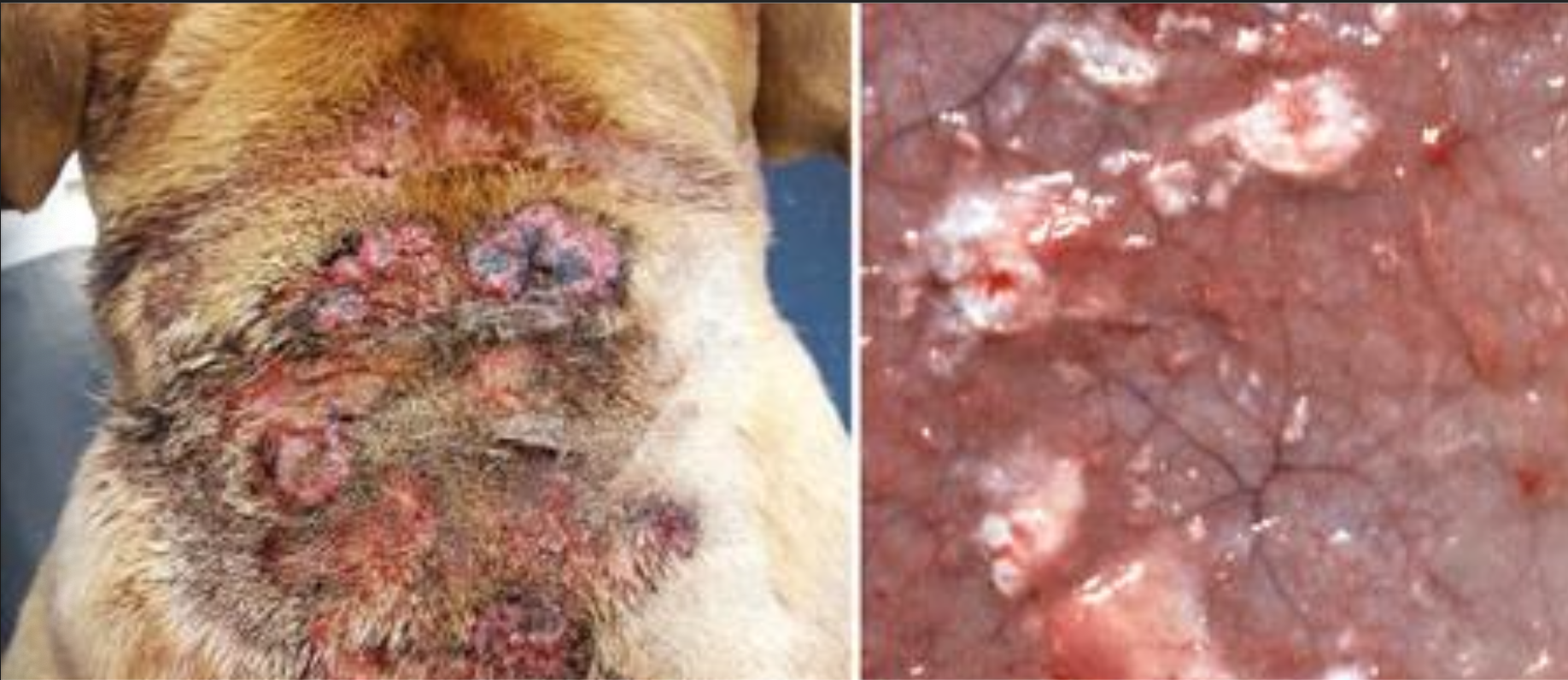
calcinosis cutis
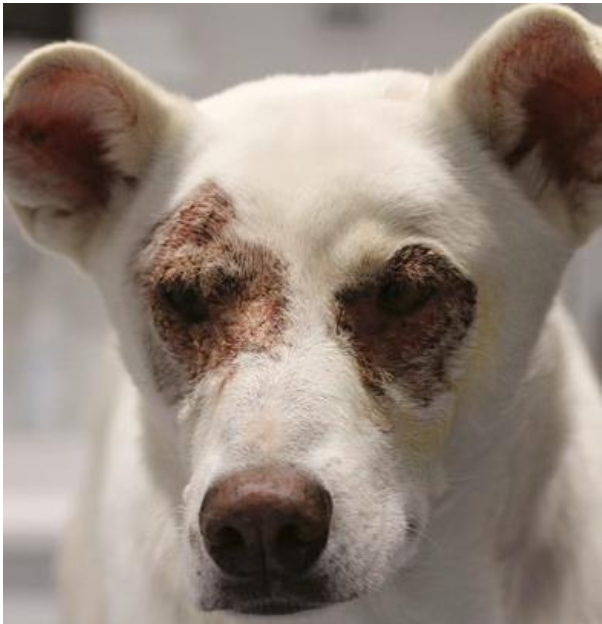
zinc-responsive dermatosis
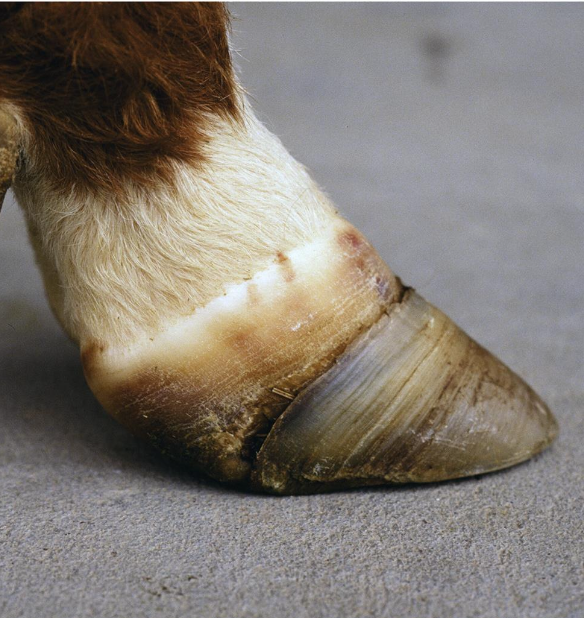
selenium toxicosis
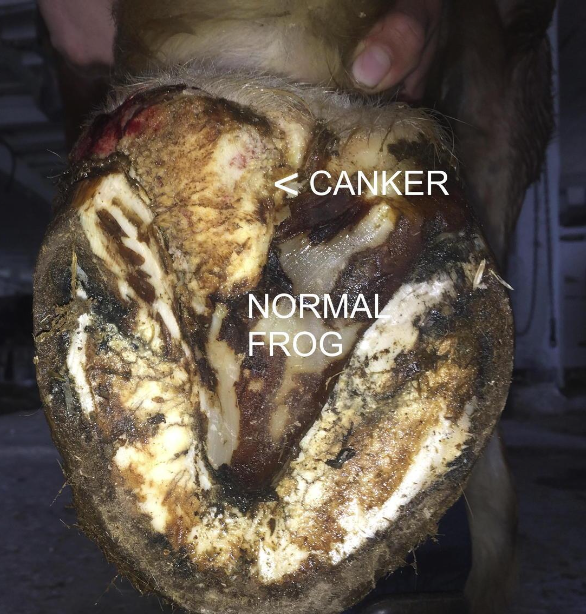
proliferative pododermatitis

necrotizing pododermatitis (thrush)
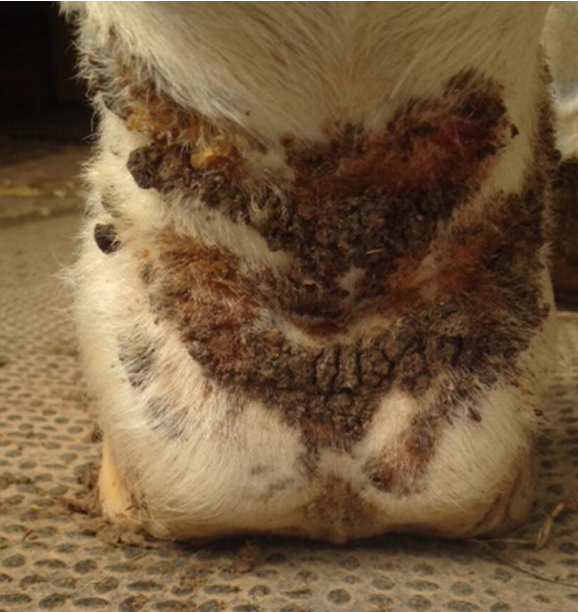
equine pastern dermatitis